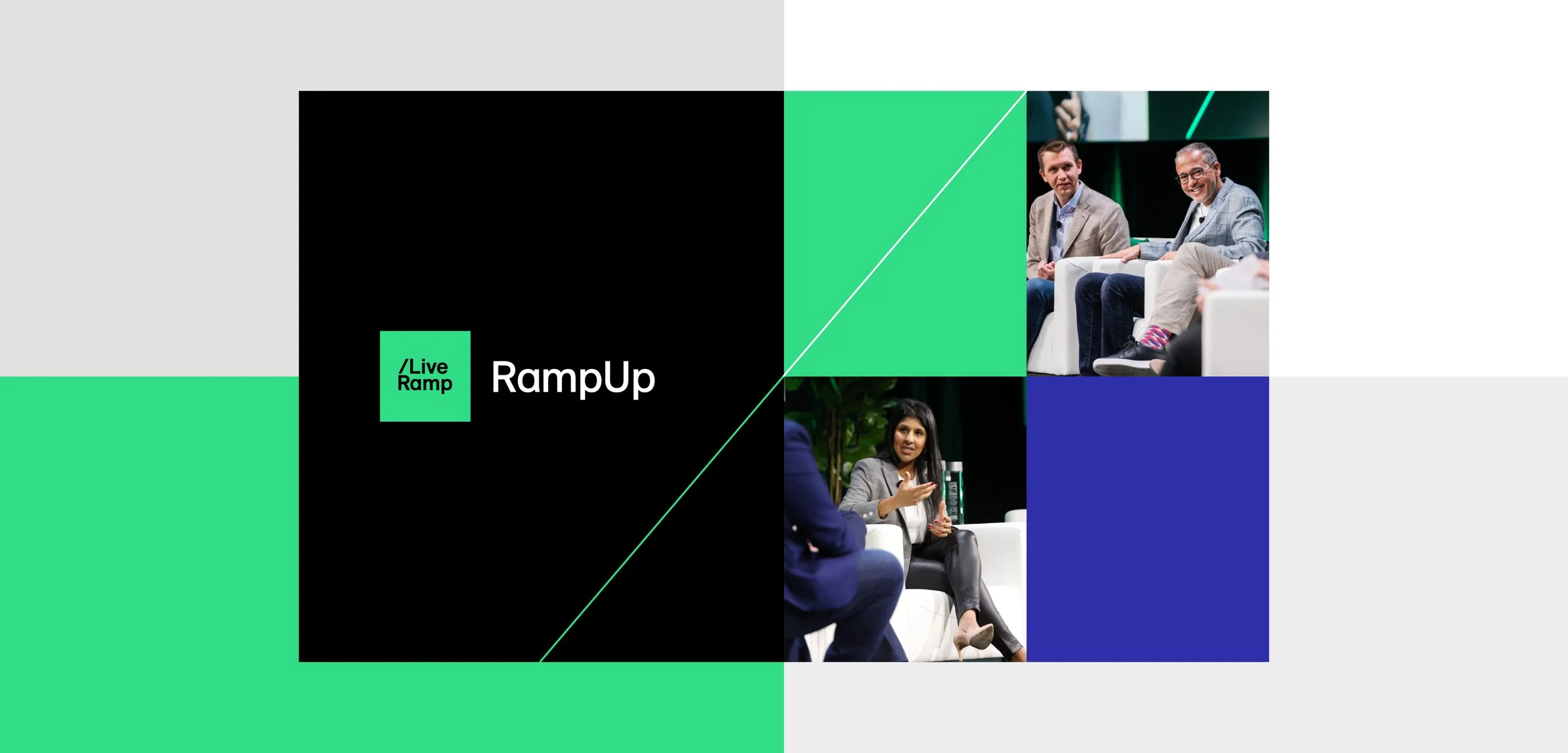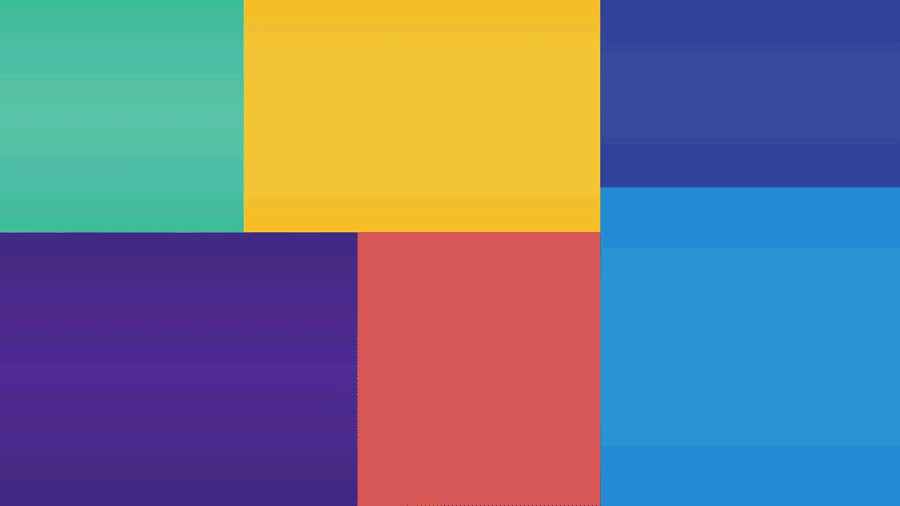RampUp 2023
Art direction, animation
TIMELINE
July 2022 - March 2023
DELIVERABLES
Brand identity, design system, signage, animation, promotional assets, swag
Design team: Phil Winfield (creative director), Katie Bielawski (designer)
I had three main challenges for RampUp:
- Establish and build guidelines for the new RampUp look and feel
- Streamline a design system that could scale the brand and expedite the asset production
- Establish an animation style that would be adaptable across multiple screens and platforms
getting started
Working with the creative director, we tested out different design approaches for the RampUp brand. We wanted something that spoke to LiveRamps style, while feeling a bit more expressive and colorful. We were drawn this bold, color blocking approach.
The RampUp brand is more colorful and block-based, yet the connection between the two identities is immediately clear.
I defined this color blocking approach in the RampUp guidelines.
Weekly emails are sent out from LiveRamp in the months leading up to the event, and with constantly changing content it was important to be prepared for mass production.
I built out a RampUp-specific component-based design system that could be used across the greater content and design team.
Copy writers could select, and write to, the module of their choice, and the designer can pull from pre-built components.
I built out this component library in Figma to systemize email production.
Here is the design system in use. Once a copywriter selects the component and finishes copy, designers can simply drag in the components, plug in the copy, and export!
Email design system in use
Animation
As LiveRamp’s resident animator, I adapted the brand style for animation, addressing challenges such as creating a systemized, easily editable design for a large number of speakers (headshots, job titles) and ensuring a cohesive visual experience across various formats.
Animation in Signage/Mainstage
I collaborated with the event agency’s video production team to design stage elements, creating 3D renderings and an animation storyboard.
I also considered factors like screen spacing for an immersive experience and layout adaptability for up to six speakers.
Conceptualizing the look and feel of the mainstage animation. I worked with the agency to give art direction and build renderings of the stage.
Final main stage animation
Additional Video
final event
Takeaway
Providing RampUp with a new, bold identity was critical in light of LiveRamp's rebrand, and a perfect opportunity to revitalize our design processes. Developing this new identity and design system allowed the marketing team to put on a fully streamlined, cohesive, and immersive event in a matter of months, and the success of the event lead to a larger number of registrants for the following year.



















